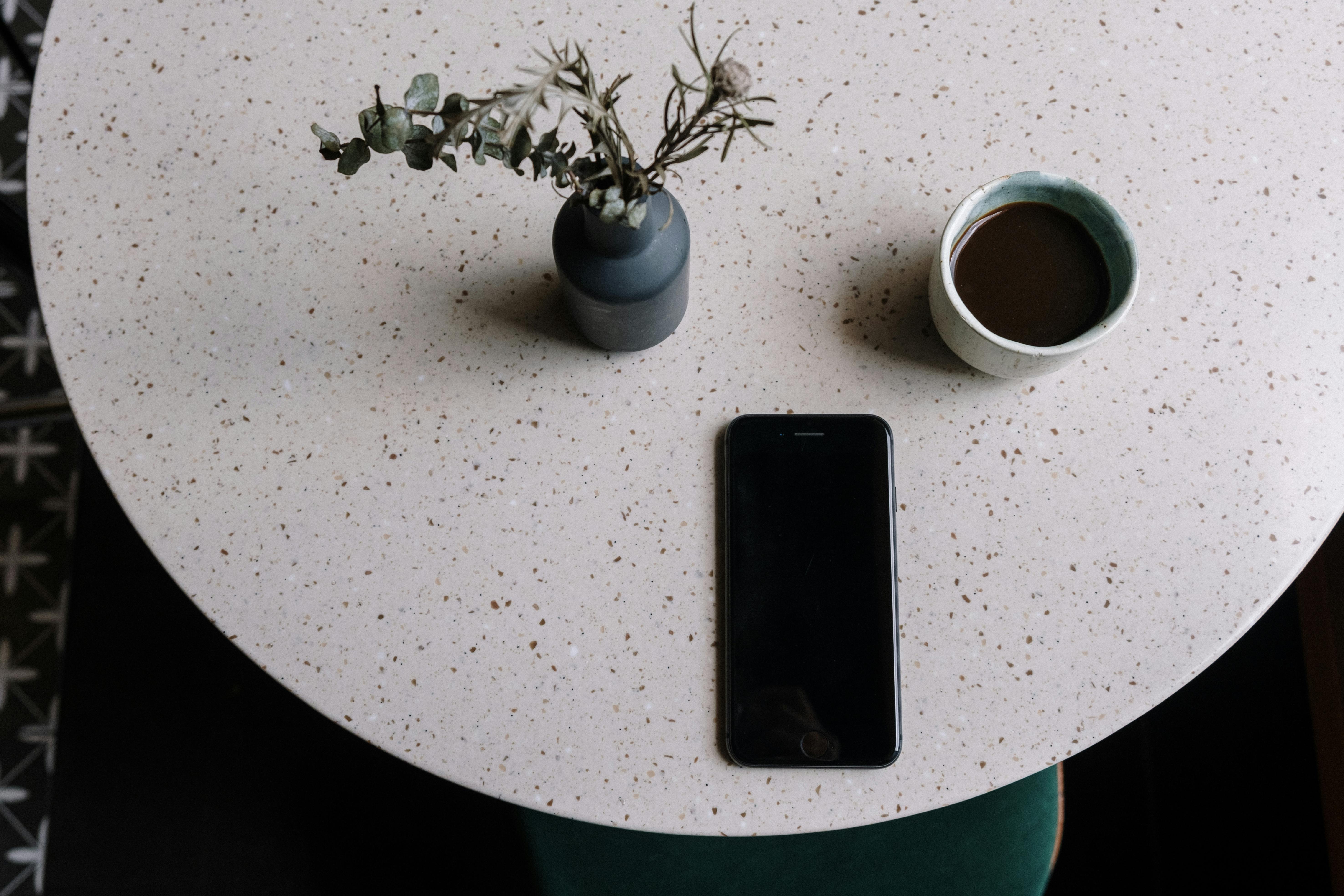Mirroring your iPhone without them knowing can be a tricky task. However, with the right tools and techniques, it is possible to mirror an iPhone without the other person realizing it. In this guide, we will discuss how to mirror an iPhone without them knowing, including the best methods and tools to use for successful mirroring.It is not possible to mirror an iPhone without the user knowing. Mirroring an iPhone requires the user’s permission, as it involves granting access to the device’s Screen Time settings. Additionally, any mirroring software that is used must be installed on the device and will be visible in the device’s app list.
Setting Up an iPhone Mirroring Tool
Mirroring your iPhone screen onto your computer is a great way to make presentations, share content with others, or just show off your photos and videos. There are a few different ways to do this, but one of the easiest is to use an iPhone mirroring tool. These tools allow you to connect your iPhone to your computer wirelessly and cast whatever is on your phone’s screen onto your computer.
The first step in setting up an iPhone mirroring tool is to install the software on both the computer and the phone. In most cases, this involves downloading the app from either the App Store or Google Play store. Once the app is installed, open it on both devices and follow the instructions for connecting them. This usually involves scanning a QR code with your phone’s camera and then entering a code into the app on both devices.
Once you’ve connected both devices, you can start mirroring your phone’s screen onto your computer. To do this, just open up the app on both devices and click on “Start Mirroring”. This will start streaming whatever is on your phone’s screen onto your computer in real time. You can also adjust settings like resolution and frame rate as well as customize other features such as screen orientation and scaling.
When you’re done mirroring, simply press “Stop Mirroring” in the app and it will disconnect both devices. That’s all there is to it! With just a few simple steps, you can easily set up an iPhone mirroring tool and start sharing whatever is on your device’s screen with others in no time at all!
Step 1: Connect Your iPhone to a Computer
The first step to mirroring your iPhone is to connect it to a computer. To do this, you’ll need a compatible computer with the latest version of iTunes installed. Once iTunes is open, plug your iPhone into the USB port of the computer and wait for iTunes to recognize it. You may need to authorize the connection if prompted. Once connected, you will be able to access the data and settings on your iPhone from your computer.
Step 2: Enable AirPlay Mirroring on Your iPhone
Once you have connected your iPhone to your computer, you will need to enable AirPlay Mirroring on your iPhone. To do this, open Settings on your iPhone and tap “AirPlay & HomeKit”. Next, tap “AirPlay” and then turn on “AirPlay Mirroring”. You should now see a list of available devices that are compatible with AirPlay Mirroring. Select the device that you want to use for mirroring and follow any additional instructions that may appear.
Step 3: Start Mirroring Your iPhone
Once AirPlay Mirroring is enabled, you can start mirroring your iPhone. To do this, open Control Center on your iPhone by swiping up from the bottom of the screen or swiping down from the top right corner of the screen (depending on which model of iPhone you have). Tap “Screen Mirroring” and select the device that you want to use for mirroring. The device should start mirroring immediately.
Step 4: Stop Mirroring Your iPhone
When you’re done mirroring your iPhone, you can stop it by opening Control Center again and tapping “Stop Screen Mirroring”. Alternatively, you can also disconnect your phone from the computer or turn off AirPlay Mirroring in Settings.
Understanding Screen Mirroring and AirPlay
Screen mirroring and AirPlay are two of the most important features for any connected device, allowing users to transfer media from one device to another. They both work in a similar way, allowing users to view content such as photos, videos, and music on their devices.
Screen mirroring is the process of streaming content from one device to another. This allows users to share photos, videos, and other content with friends or family on different devices. The technology uses a wireless network connection to transmit data from one device to another without the need for extra cables or wires. The devices must be compatible with each other in order for the data transfer to take place.
AirPlay is an Apple technology that allows users to stream content from their Apple devices, such as iPhones and iPads, directly onto their TVs or other compatible devices. AirPlay works by using a wireless connection between the two devices and allowing them to communicate with each other. This allows users to view content on their TVs that they wouldn’t otherwise be able to access due to its format or size restrictions.
Both screen mirroring and AirPlay are useful tools for connecting devices together and sharing content across multiple platforms. They both offer an easy way for users to enjoy media without having to worry about compatibility issues or cable messes. With these technologies, it is now easier than ever before for users to watch movies, listen to music, and share photos with friends and family across multiple platforms.
The Benefits of Screen Mirroring
Screen mirroring is a process by which content from one device is displayed on another device. It is a useful feature that can be used to stream videos, movies, and presentations to a larger screen. By using screen mirroring, users can easily share their content with a larger audience. This technology offers many benefits that make it an invaluable tool for businesses and individuals alike.
One of the greatest advantages of screen mirroring is that it eliminates the need for multiple devices or cables when sharing content. Instead of connecting multiple devices, users can simply connect one device to their display and share the same content across multiple screens. This makes it much easier and more convenient for users to present their ideas or showcase their work in a professional setting.
Another benefit of screen mirroring is that it provides enhanced audio-visual experiences for viewers. When using this technology to stream videos or movies, viewers will be able to enjoy higher quality images and sound than they would get with any other streaming service. This makes it ideal for viewing films or presentations in an auditorium or conference room setting where high-quality audio-visual capabilities are essential.
Furthermore, screen mirroring is incredibly versatile since it can be used with most devices and operating systems such as Mac OSX, Windows, iOS, Android and more. This means that users can easily share their content regardless of what type of device they are using. This makes it an ideal choice for those who need to transfer data between different platforms quickly and efficiently.
Finally, screen mirroring allows users to collaborate more effectively by allowing them to share documents, spreadsheets, images and other files in real-time with multiple people simultaneously. This makes it much easier for teams to work together on projects remotely without having to physically meet in person or transfer large files back and forth between computers.
Overall, screen mirroring offers many benefits that make it an invaluable tool for businesses looking to maximize productivity and collaboration as well as individuals who want an easy way to share content with others. By taking advantage of this technology’s features, users can make presentations more interesting and engaging while also eliminating the need for multiple devices or cables when transferring data between different platforms

How to Use Apple’s AirPlay Feature to Mirror Your iPhone
AirPlay is an Apple feature that allows you to mirror your iPhone screen onto another device, such as an Apple TV. It can be used for a variety of different purposes, including streaming movies and TV shows, displaying photos and videos, or even playing music or games. With AirPlay, you can easily share content with friends and family, no matter where they are.
To use AirPlay, you’ll need an Apple TV connected to the same Wi-Fi network as your iPhone. On your iPhone, swipe up from the bottom of the screen to bring up the Control Center. Tap the AirPlay icon in the upper-right corner of the screen. You should now see a list of available devices that you can stream content to. Select your Apple TV from this list and tap it to start mirroring your iPhone’s display on the big screen.
Once enabled, anything you do on your iPhone will appear on your television in real time. You can control playback using either your iPhone or your Apple TV remote control. To end AirPlay streaming and return control to just your iPhone’s display, simply tap the AirPlay icon again in Control Center and select ‘Stop Mirroring’.
Using AirPlay is also a great way to watch movies or play games with friends and family who are not in the same room as you. Just make sure everyone has their own device connected to the same Wi-Fi network before starting up AirPlay. And with its easy setup process and intuitive user interface, using AirPlay is a great way to share content with those around you without having to compromise quality or comfort.
Connecting with Third Party Apps for iPhone Screen Mirroring
Mirroring your iPhone screen to your TV is a great way to watch content on a bigger display. With the aid of third party apps, it’s easy to mirror your iPhone and iPad’s display to an Apple TV, Chromecast or other compatible streaming device.
These apps provide an easy and convenient way for users to connect their devices with the streaming device and enjoy their content on the bigger screen. In addition, some apps allow users to stream video, music and photos from their iOS device directly to their TV without any wires or cables.
There are several third-party apps available in the App Store that can be used for iPhone screen mirroring. Some of the most popular apps include AirBeamTV, LonelyScreen and ApowerMirror. These apps allow users to easily connect their iOS device with an Apple TV or Chromecast connected to a TV or monitor.
Once connected, users can then view their content on the bigger display in real-time. With AirBeamTV, for example, users can stream live video from their iOS devices directly onto their TVs without having to use any cables or wires. Additionally, some of these apps also support multi-screen mirroring which allows users to view multiple screens simultaneously on one display.
In order to use these third party apps for iPhone screen mirroring, you must have a compatible streaming device such as an Apple TV or Chromecast connected to your TV or monitor. The app must also be installed on both devices in order for it to work correctly. Additionally, you may need to ensure that your iOS devices are connected to the same Wi-Fi network as the streaming device in order for it to work properly.
Overall, connecting with third party apps is an easy and convenient way for users to stream content from their iOS devices directly onto a bigger display such as a TV or monitor without having to use any complicated wires or cables. With these apps, you can easily view photos, videos and music from your iPhone or iPad on a larger screen with just a few taps of your finger!
Risks of Trying to Mirror an iPhone Without Permission
Mirroring an iPhone without permission can be a risky endeavor due to the potential for unauthorized access to personal data. If someone were to gain access to an iPhone without the owner’s knowledge, they could potentially gain access to sensitive information such as contacts, photos, emails, and messages. In some cases, they could even gain access to banking details, passwords, and other confidential data. This can lead to serious security issues and potential identity theft.
In addition, mirroring an iPhone without permission can also leave the device open to malware and viruses. Malware is malicious software that is designed to damage or disable a device. It can be spread through emails, downloads, websites, or even when mirroring another device. Once installed on a device it can be difficult or impossible to remove without damaging the phone’s operating system.
Another risk of mirroring an iPhone without permission is that it may be used in violation of copyright laws. If someone were to use a third-party application or service to mirror an iPhone without permission from the owner, then it could be considered copyright infringement in some countries. This could result in potential legal action being taken against the person responsible for the unauthorized mirroring.
Finally, there is also the risk of data loss when mirroring an iPhone without permission. Data stored on iPhones are not always backed up automatically and if something were to happen while mirroring it could cause irreparable damage or loss of important files and documents stored on the device.
Overall, there are significant risks involved with trying to mirror an iPhone without permission from its owner including unauthorized access of personal data, malware and virus infections as well as potential copyright infringement issues. Data loss is also possible which can lead to serious consequences depending on what was stored on the device. It is important for anyone considering mirroring an iPhone without permission from its owner to weigh these risks carefully before proceeding with such activity.

Conclusion
Mirroring an iPhone without the user knowing can be done with certain apps and methods, such as AirPlay, TeamViewer QuickSupport, and Reflector 3. The user must have the right technology and compatible devices in order to be successful in mirroring the iPhone. It is important to ensure that the user is aware of their privacy settings when attempting to mirror an iPhone without them knowing. Additionally, it is important to keep in mind that this type of action may be illegal or unethical depending on the circumstances.
Overall, mirroring an iPhone without the user knowing is possible if you have access to the right technology and compatible devices. However, it is essential to consider your own ethical standards before attempting this type of action to avoid any legal or personal consequences.
